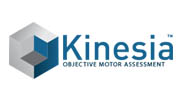I was confused as heck, but I think I’m figuring this - those red graphs marked “Input Current” on the legends are actually “output voltage”… right?

Kinesia ONE™ Product Overview - Kinesia
Kinesia ONE
I was confused as heck, but I think I’m figuring this - those red graphs marked “Input Current” on the legends are actually “output voltage”… right?
Ahh, okay. I was curious if the patch had to draw power for the electronics from the host to sense for the charger.
I was confused as heck, but I think I’m figuring this - those red graphs marked “Input Current” on the legends are actually “output voltage”… right?
Oops, you are correct, I need to fix that.
Ahh, okay. I was curious if the patch had to draw power for the electronics from the host to sense for the charger.
No, the small pulses each second has enough power to start the receiver and let it send a request for power back.
I suppose it would not be a good idea to have this technology charging in your bed room?
I suppose it would not be a good idea to have this technology charging in your bed room?
This transmitter has a fairly low power and the low frequency has low effect on humans, it is not like mobil phone transmitters that can heat tissue.
People that lives near long wave radio transmitters receives more radiation.
I was curious if the patch had to draw power for the electronics from the host to sense for the charger.
The patch doesn't draw any power from the host, all the power it consumes comes from the transmitter. The patch has a blocking diode insuring current only flows out of the patch.
To get Qi certification, devices are supposed to be at least 70% efficient. I'm sure that's near impossible to enforce considering the volume of suppliers.
To get Qi certification, devices are supposed to be at least 70% efficient. I’m sure that’s near impossible to enforce considering the volume of suppliers.
A QI charger contains two devices (Transmitter and receiver), what device has to be 70% efficient? and how efficient do the other one have to be?
Specifying that the total must be 70% gives a lot of wriggle room, i.e. you get the certification with one of the devices a super efficient design and the other a average design. The user can then buy two cheap average devices and the total efficiency is below 70%.
There is also the question if Chinese companies bother with the certifications.
The Qi spec for tansmitters is pretty well locked down, but still allows quite a few different designs, but the transmitters need to be tested to certify they meet the standard. I'm not sure if (but I think) the transmitters need to meet a certain efficiency level (I've only designed receivers). The idea here is that any receiver should work with any transmitter.The spec is more relaxed on receivers, if you put a poor receiver in your product, your product and reputation will suffer.
The overall system 70% doesn't give a lot of wiggle room. If the trans were 80%, the receiver would need to be over 87% to hit 70% total. The Qi standard need not be applied if the product doesn't bear the Qi logo. And there are many applications (like mine) that don't hit the 70% target. I use a very small coil, which causes a coupling mismatch, and I'm only transferring about 400mW, so the conversion losses eat up a lot of my efficiency.
It should be noted that the efficiency is tested at full load (about 10W). As the power transfer tapers off - as a battery reaches full charge - the efficiency will drop well below 40%.
But for putting power back into a sealed system it hard to beat wireless power transfer.
See http://www.wirelesspowerconsortium.com/
And there are many applications (like mine) that don’t hit the 70% target. I use a very small coil, which causes a coupling mismatch, and I’m only transferring about 400mW, so the conversion losses eat up a lot of my efficiency.
A watch perhaps? Could you share any pictures?
I really would not want those in my bed room despite all the assurances ![]()
Here's a link to the product website:

Kinesia ONE
Slides 3 and 5 show it on a charging puck. Slide 4 shows it worn on a finger.
The Kinesia product line monitors and assesses tremor and motion symptoms in patients with Parkinson's disease. The wireless recharging allows the unit to withstand the inevitable dunking in water, and the lack of connectors really improves ESD resistance.